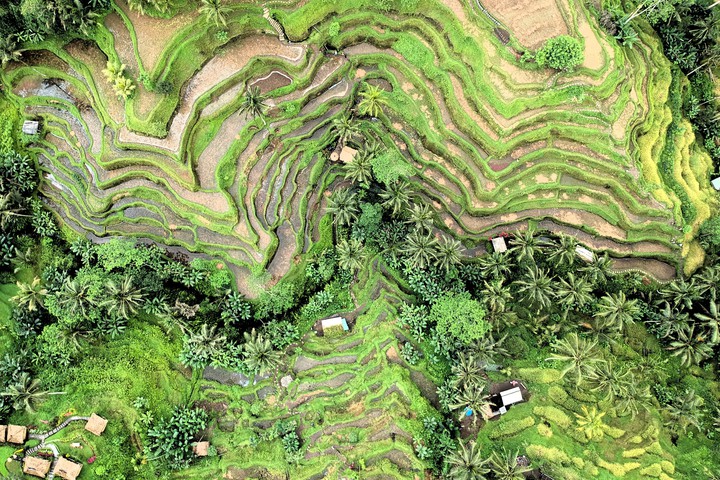
Design thinking starts with integrative thinking which is the ability to exploit opposing ideas and opposing constraints to create new solutions. Let’s take a closer look at what design thinking is, how it is implemented, how it has evolved, and what it might hold for our future.
It started out in the early ‘60s as a methodology to try to solve complex problems. However, with the tech boom of the last few decades, the trend went small.
There was a lot of time and money invested in designing devices for entertainment, communication, fashion, home furnishings, and convenience. The trend has been to work on smaller things, focusing on aesthetics, image, and consumer usefulness.
But Design Thinking is at an exciting pivotal point in its evolution right now. It’s moving away from small objects to larger, more systemic issues like global warming, agricultural challenges, cultural issues, and even systems of patient care in hospitals.
What is design thinking, exactly?
First and foremost, design thinking is human-centered. It starts with what humans need or might need. It starts with asking questions, then balancing desirability (what humans need) with technical feasibility and economic viability.
How is design thinking implemented?
This graphic by interaction-design.org gives us a visual to break down design thinking process steps.
Graphic by interaction-design.org
It all starts with empathy
“We spend a lot of time designing the bridge, but not enough time thinking about the people who are crossing it.”
– Dr. Prabhjot Singh, Director of Systems Design at the Earth Institute
Building great things is an incredible achievement, but building great things that people need, that solve world problems--that is a much more worthy achievement.
Whether it’s improving patient experience or even improving the functionality of those entertainment and communication gadgets we referred to earlier, the design team must put themselves in the shoes of the user/consumer/patient/recipient.
Tony Fadell, a former Apple employee refers to his old boss, Steve Jobs, and his continual reminder to his staff to “staying beginners”-- to constantly try to see the world with fresh eyes and see the product as the customer might experience it. Jobs’ reasoning for this comes from the philosophy of Shunryu Suzuki, who said, “In the beginner’s mind there are many possibilities. In the expert’s mind, there are few.”
In terms of design teams, diversity is a key element necessary for gaining perspective. Having a range of ages also adds a great dimension that combines the experience of older generations with the acute awareness of the younger generation’s pressing realities and unique point of view.
Developing prototypes
Prototypes speed up the process of innovation. It is only when we put our ideas out in the world that we start to understand their strengths and weaknesses. The faster we do that, the faster our ideas evolve.
Design thinking is not a linear process, it is an iterative process that requires continual feedback and collaboration.
Examples of design thinking in action
A great example of the need for design thinking is the NFL challenge that heroX is currently offering.
It starts with empathy: When you consider the injuries football players sustain, it’s a very real danger. Concussions increase the risk of mental illnesses like dementia and chronic traumatic encephalopathy (CTE). And although catastrophic injuries and fatalities are uncommon in football, a small number of them still occur each year. Both concussions and catastrophic injuries can be caused by helmet-to-helmet collisions as well as impact against the ground or other players' knees; in other cases, they can be caused by players who have sustained a head injury returning to play, which can place the player at risk of sustaining a severe injury.
The NFL Helmet Challenge is a $3 million innovation challenge that aims to stimulate the development by experts, innovators, and helmet manufacturers of a new helmet for NFL players that outperforms, based on laboratory testing, all helmet models currently worn by NFL players.
The challenge will culminate in July 2021 with the applicants submitting helmet prototypes for testing in laboratory conditions that represent potentially concussive impacts in the NFL. Applicants will compete for up to a $1 million award.
This challenge is the next phase in the league’s Engineering Roadmap, which aims to improve the understanding of football biomechanics and to create incentives for small businesses, entrepreneurs, innovators, and helmet manufacturers to develop new protective equipment.
Why design thinking? Why now?
“The people who need design ingenuity the most, the poorest 90% of the global population, have historically been deprived of it.”
– Alice Rawsthorn, Design critic
In times of change, we need new alternatives and new ideas. Design thinking gives us a new way of tackling problems. Instead of defaulting to our normal convergent approach where we make the best choice out of available alternatives, it encourages us to take a divergent approach to explore new alternatives--new approaches, and new ideas that didn’t exist before.
Design thinkers start with a goal in mind (make life better for those in poverty in our community) rather than a problem to solve (eliminate poverty) because problems can have many potential causes and effects that can be approached from a variety of different angles. Design thinkers look for workarounds and improvise solutions.
Social and economic factors should not prevent people the world over from having clean drinking water, clean air, hearing aids, and other devices that enhance, and in some cases, save human lives. Design thinking is how we can imagine a better world, and make those concepts a reality.








